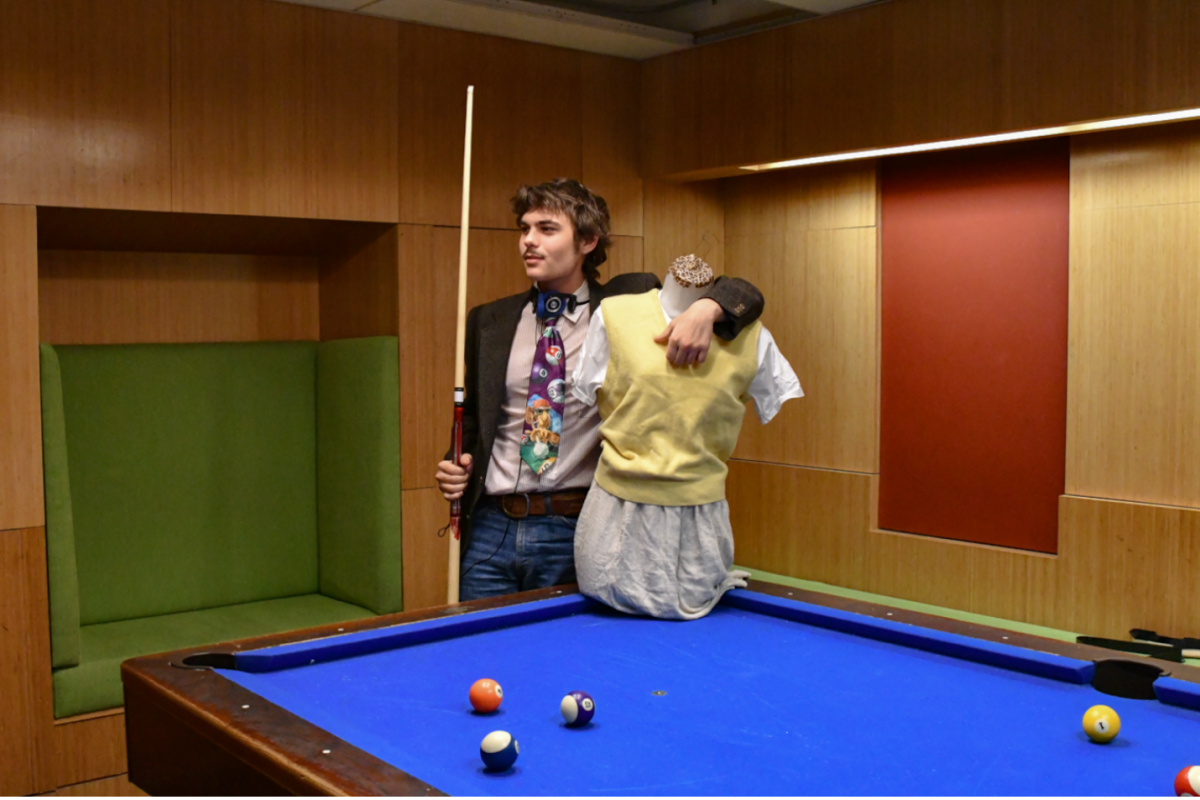
With the holidays just around the corner, 19,000 pre-ordered Lammily dolls will be gifted to little girls. The doll, also known as the “normal Barbie,” was released last Wednesday for sale, creating a mixture of rejoice and criticism, as expected by the creator of the doll, Nickolay Lamm.
Lamm, a graphic artist and researcher whose work is regularly featured in The Huffington Post, found his inspiration for creating the Lammily doll while undertaking what he refers to as the “Body Measurement Project.”
The Lammily doll is a natural-faced brunette in an ombré denim shirt, jean shorts and white sneakers. She has a 5-foot 4-inch height, a 31-inch waist and a shoe size of 7.5. These measurements are based on the average 19-year-old American woman’s body, calculated from the data at the Center for Disease Control. She is alarmingly stockier, shorter and more tomboyish than her 1950’s predecessor, Barbie.
The quintessential American doll, created by the Toy Company Mattel in 1959, has a face coated in makeup and ludicrous measurements that would disallow her to digest her food – if she ate that is. Her 18-inch waist on her 5-foot 9 frame would allow for only half of a liver and a couple inches of intestines, based on data by Rehabs.com, a site dedicated to combating mental health in America. With her six-inch ankles, three inches smaller than the average woman’s, and three inch feet, bipedalism would be out of the question for Barbie.
In a quest for realistic depiction of a woman’s body for young American girls, Lammily also comes with stickers that include acne, blushed cheeks, freckles, moles, scrapes, bruises, scars, mosquito bites, stretch marks and cellulite. As these are common imperfections on the average female body, they are generally being criticized as overdoing the attempt at being accurate and overreaching the boundaries of what a doll should function as.
In Lionel Shriver’s article for The Guardian titled, “Sorry Lammily, Your Dumpy Looks Won’t Fool Many Little Girls,” she said, “But why did Lamm stop there? How about herpes sores and genital warts, a malignant-looking breast lump, diarrheal dribble from when Lammily’s last dose of laxatives worked a bit too well, a big plastic pool of bulimic sick, since this doll may be told she’s lovely just the way she is, but she doesn’t believe it?”
She continues this comedic critique by raising the point the peel on and off property of a sticker may reinforce as unrealistic of an assumption in little girls as a Barbie not having it in the first place could.
Lamm defends his doll and the stickers, saying, “You know, people were saying this whole project was a joke from the beginning, so I have no doubt some people will take it as a joke. But I hope there are enough people who believe what I believe. I think 25 percent to 30 percent will think the stickers are stupid and the rest will think it’s good.”
While adults have their fair share of opinions about the doll, the true test of Lammily’s capability is among her targeted audience – little girls. In a recently conducted experiment done among second grade girls and boys, featured in an article by Time Magazine, the Lammily doll was preferred widely among the students.
Students were given both a Lammily doll and a Barbie doll and asked a series of questions about the two such as which one they would rather own, what are the differences they see between the two and what they both look like they do. It was undeniably heartwarming when most students said Lammily looked like “their best friend’s big sister” or “their own sister,” and as equivocally comical when eyes rolled and perplexed facial expressions surfaced to the question of what Barbie does for a living.
Lammily’s professions ranged but were arrived at much quicker. Many said she could be a teacher. When asked which one they would rather own, nearly every student said they would rather own Lammily but they also included they already owned the Barbie used in the study.
Overall, the Lammily doll was meant to provide little girls with the realistic notion of a body that they may grow into following puberty. In an attempt to be maybe, overly accurate, some argue the boundaries were pushed, others are in favor of this doll daring where none have gone prior. With a marketing slogan of “Average is beautiful,” Lamm, said, “I wanted to show that reality cool. It’s not perfect but it’s really all we have. And that’s awesome.”
Erica Garnett can be reached at [email protected].



















Veronica • Nov 24, 2014 at 12:59 pm
this article was fantastic! Covers all points and makes while doing that! Also, I found myself laughing/smiling several times while reading it! Excellent!